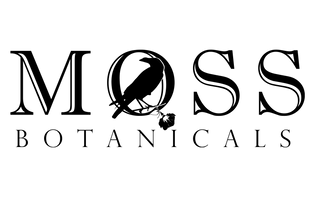
I started a fire in our wood-burning stove by building a small teepee of kindling then igniting newspaper underneath it. I slowly watched it grow from small bits of light into little flames trying to take hold. I breathed gently on it. My face became flush with heat. I went to get my bag of frankincense tears. These are small pieces of resin that are burned in ceremony or church. I pitched a few into the flames, hoping they would land on the hot coals. I wanted to be able to smell their aroma. A few landed in the center but did not burn. I tossed in a few more and then a few more. Finally I could see the tears disintegrating. The smoke wound out of the golden oval and started to move into the atmosphere, looking like a charmed serpent. Transfixed I remembered a thousand things. The most prominent was the sacred. As I shut the glass door to the stove, this came to me. 'The perfumed smoke of the earth that holds wisdom and has kept a million rituals acknowledged will be billowing out of the chimney into the sky. Who will greet it? Will the ancestors and spirits connect to the intention that was actualized in the fire? I saw the messengers flying through its invisible haze, together they merged surrendered to reason and transmutation.' While staring at the fire I experienced this connection. Nature speaks and nature farms and nature heals. It has been conveyed through herbalism and spiritual teachings that when we are in close relationship with the natural world we are activated into the highest wisdom of healing. We are in everything and everything is within us. The patterns and the information is everywhere. In the example of frankincense tears, I felt an opening in that moment, profoundly revealed to me, while breathing in the aroma. Frankincense teaches us that suffering is not always in our control. How might this be?
“Harvesting Frankincense is quite a time consuming process. A deep incision is made into the trunk (actually several incisions per tree, although according to recent research more than 5 incisions causes considerable stress to the trees.) and a small piece of bark next to it is removed. This wounding causes the tree to 'bleed' a milky white substance that seals and heals the wound and prevents infection. After three months the resin has hardened enough to be scraped off the trunk. However, to obtain the best quality Frankincense the process of wounding is repeated 3 times and only the resin collected from the third harvest is considered to be of superior quality. The solid resin is sorted into various qualities, some as tears, and some as grains of different colour and sizes. The quality is determined by the degree of opacity. Resin destined for distillation is shipped off while still slightly sticky on the inside, which denotes high concentration of volatile oil.”
http://www.sacredearth.com/ethnobotany/plantprofiles/frankincense.php
In sharing, the methods, in which, Frankincense is harvested we can start to experience the transference of energetic patterns that are held in the essence of this tree. Frankincense has to undergo considerable duress to withstand striping (the method used to obtain the oil), a long process for both the harvester and the tree. The intelligence of the tree knows what is required to repair itself. This wisdom can be applied in our usage of frankincense. A deeper understanding is also required by the harvester to ensure the longevity of frankincense trees. This is a reciprocal relationship because it sustains the livelihood of families, clans, and communities in these distant regions where they grow. These trees grow in Oman, Yemen and the Horn of Africa, including Somalia and Ethiopia. Expanding this truth extends to our participation as a consumer. The demands of social trends that highlight these natural medicines as cures for cancer etc., can contribute to the depletion of natural resources. However, there are other effects to also consider, including government regulations, cultural clashes, and environmental circumstances such as; droughts, infestations, and natural disasters. It is our responsibility to engage in these conversations and explorations as part of holistic healing.
In my opinion, based on my studies, natural medicine works best - when we are clear about what are needs are in using herbs, essential oils and supplements. That includes safety guidelines specific to what is being treated and the method used treat it. The quality of what is being used is critically important. If you are working with an essential oil or combination of herbs and oils and there is oxidation, a bad batch of plant material, pesticide use, and/or adulteration (cutting essential oils with odorless solvents to sell for a lesser cost and higher yield) then the healing power is compromised. Work with trained aromatherapists and herbalists to obtain knowledge and resources for optimal results and to avoid adverse reactions.
Here is a great read on Frankincense by Robert Tisserand.
http://tisserandinstitute.org/frankincense-oil-and-cancer-in-perspective/
Moss Botanicals is a company devoted to sharing the interwoven life of plants and people, healing and sustaining, as an ever-changing dynamic. I highlighted Frankincense to connect you to a larger view and to continue to create bridges in our world. The “Let Go” blend is made up of frankincense, cypress, and rose. The aroma is a companion and a helper to suffering and grieving from physical or symbolic deaths, unwanted thought patterns, or self-imposed expectations. Embrace the beautiful surrender of Let Go.

I have used many of your blends in the last 8 years, they are all exquisite!
The 2 that I have purchased most frequently are Let Go and Balance.
I’m glad that you have the Self Love blend again, that’s another favorite!
Brigitte